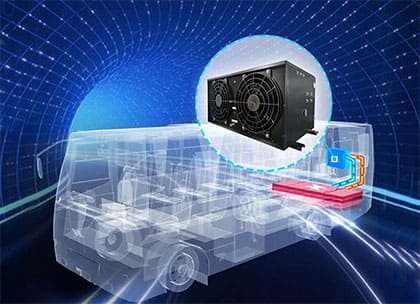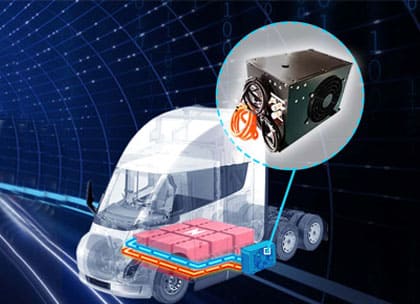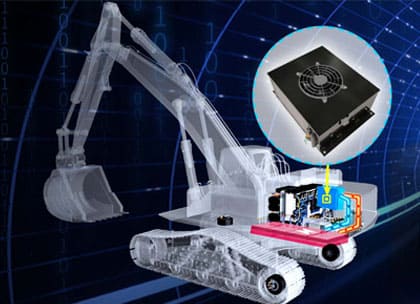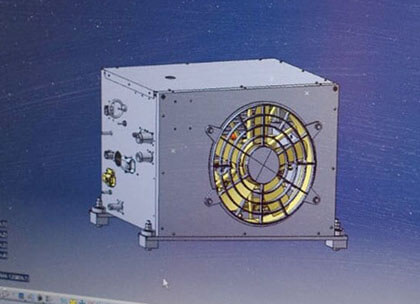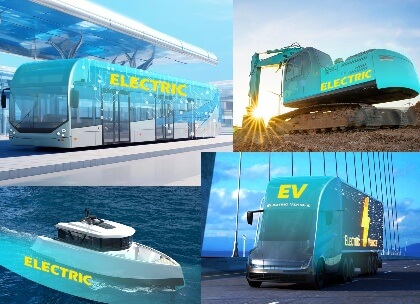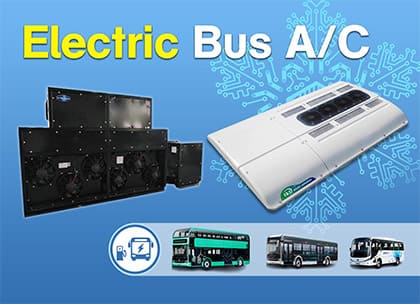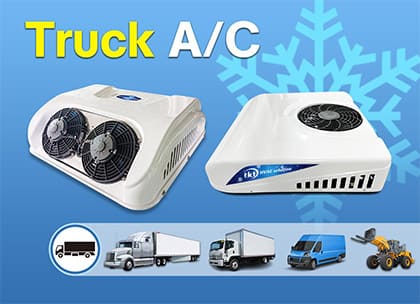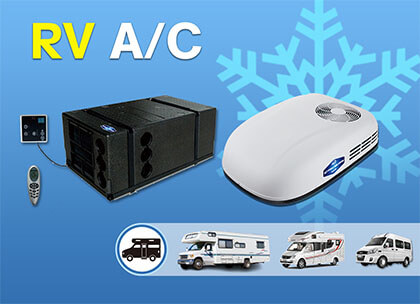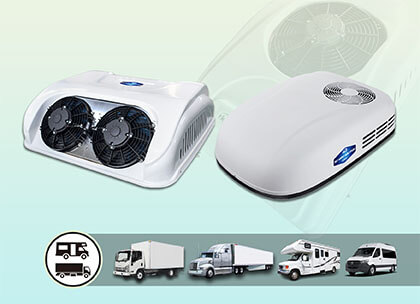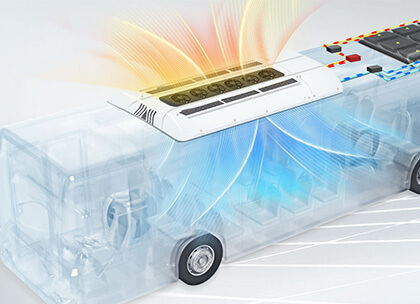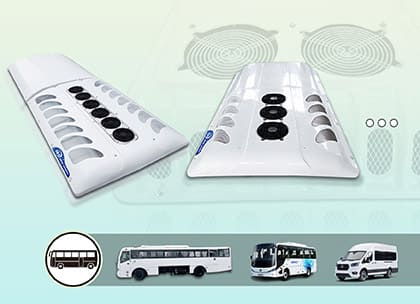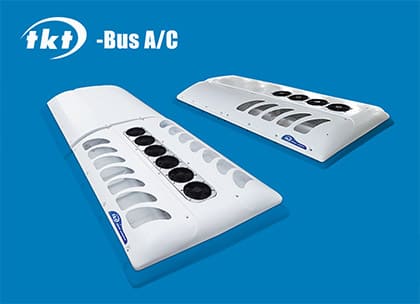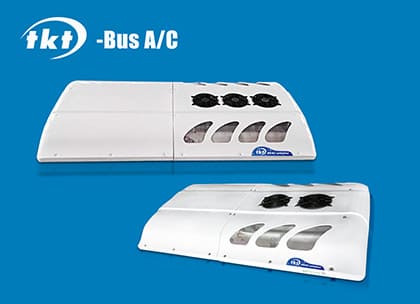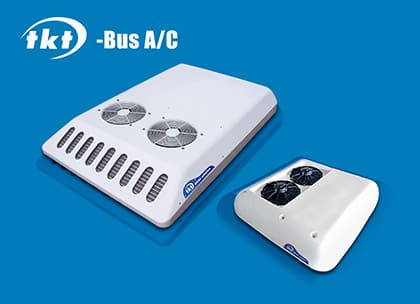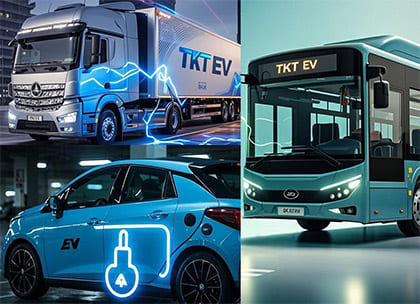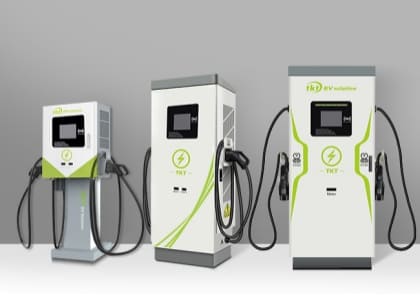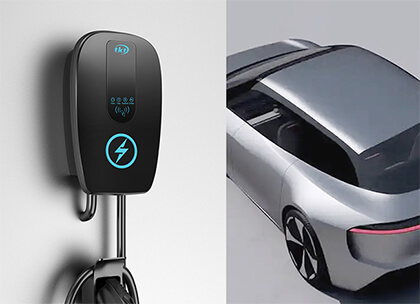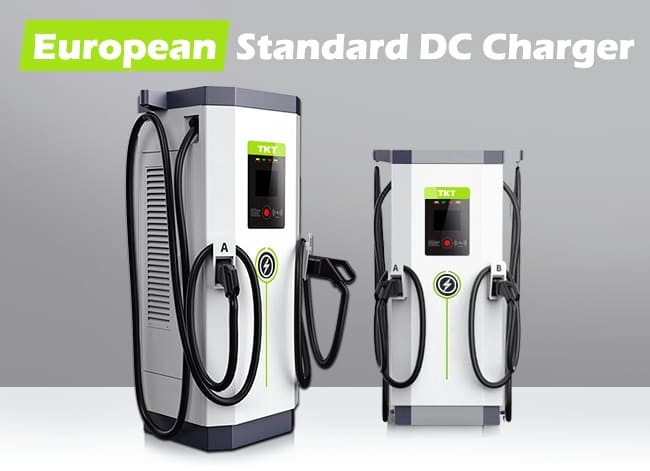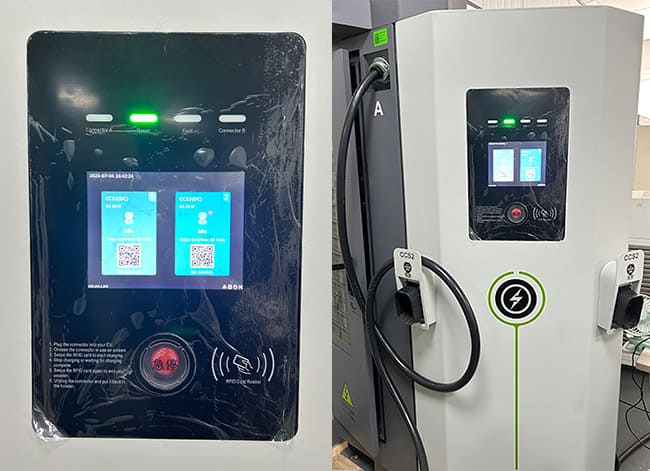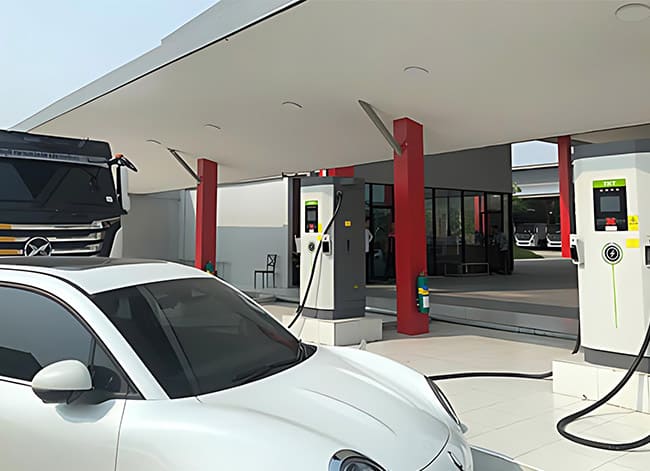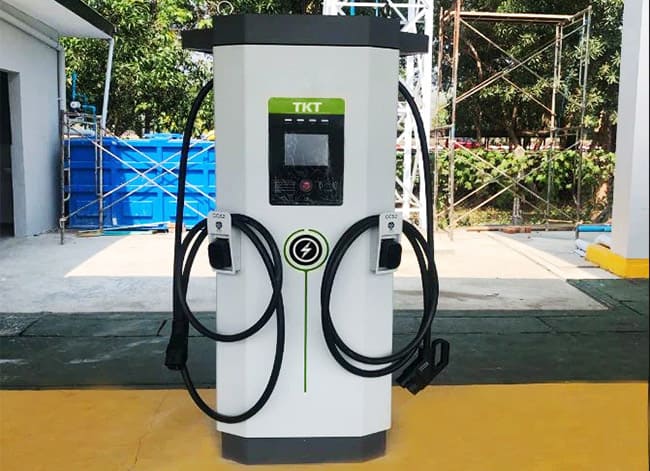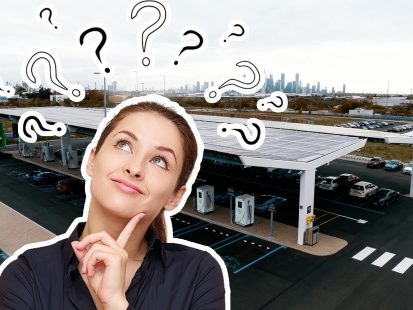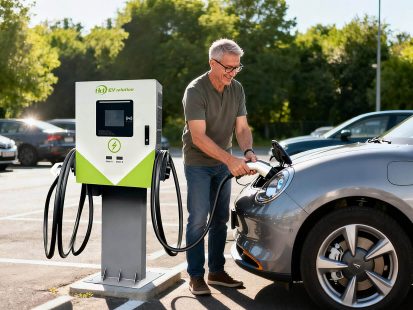DC Visão geral do carregador Fast
Este carregador Fast DC pode carregar dois EVs ao mesmo tempo e distribui de forma inteligente o poder de carregamento com seu recurso de balanceamento de carga dinâmico. Isso melhora a utilização do poder de cobrança e aumenta a lucratividade. Pertence ao nosso carregador rápido de alta qualidade, que cumpre os padrões da UE de dentro para fora em termos de módulos e materiais individuais. Portanto, a qualidade e a textura do produto são ainda melhores. O nível de proteção também é maior. O custo relativo também é mais caro. Mas vale cada centavo.
Os dois conectores de carregamento suportam uma ampla seleção de padrões: CCS1 / CCS2 / CHAdeMO / GBT.
As estações de carregamento rápido tkt dc têm uma ampla gama de soluções de carregamento. Os produtos foram exportados para mais de 40 países ao redor do mundo. Em particular, formou relações de cooperação estáveis e de longo prazo com empresas conhecidas como BYD e Tata Motors.
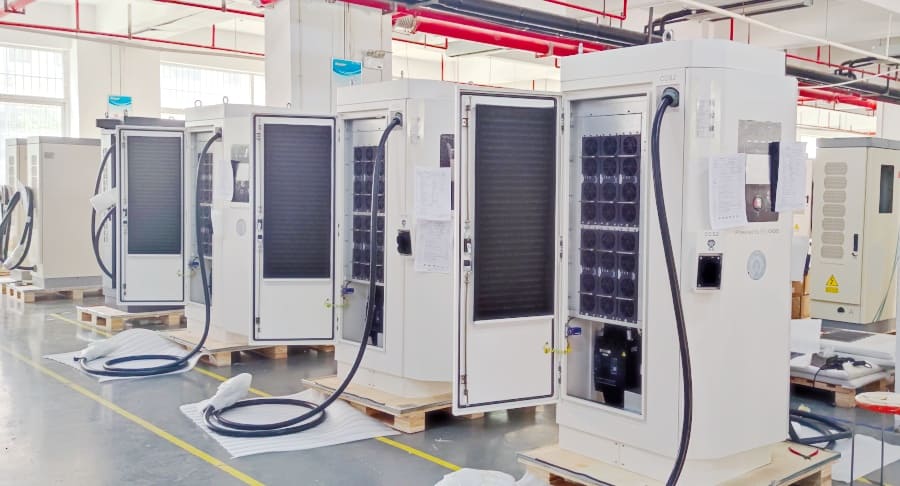
DC Fast Charger Factory
Recurso de carregador rápido compatível com a UE
1. Compatível com OCPP1.6 e OCPP2.0 Protocolo de carregamento aberto.
2. O sistema de serviço da plataforma em nuvem integra a comunicação Ethernet e 4G para realizar o faturamento, povoado, estatísticas de relatório, Manutenção do equipamento, Monitoramento e gerenciamento remotos.
3. O aplicativo de telefone celular pode realizar funções como posicionar, Carregamento de varredura de código, inquérito em tempo real, etc., e apoiar vários métodos de pagamento, como cartão de crédito.
4. Design de segurança perfeito. Com detecção em tempo real e proteção de segurança, Equipamento pré-diagnóstico anormal, Proteção de segurança independente do BMS e outras funções. Nível de proteção IP55. Com proteção de excesso de temperatura, proteção contra curto-circuito, proteção contra vazamento, Conexão anti-reversa da bateria e outras funções de proteção.
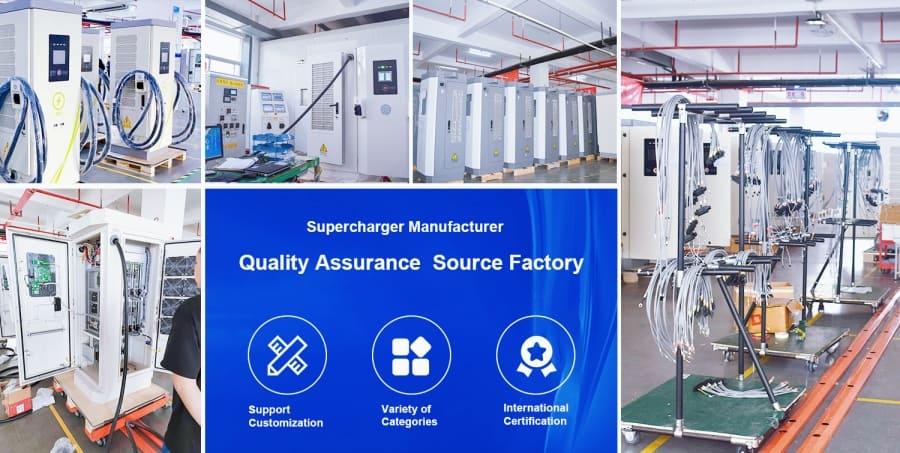
Vantagens de carregador rápido tkt dc
1. Proteção Múltipla: proteção abrangente para veículos, pessoas e equipamentos.
2. Projeto Modular: A atualização e a manutenção são flexíveis e simples.
3. Carregamento rápido: Para veículos elétricos comuns, o tempo de carregamento leva apenas 30 para 60 minutos.
4. Balanceamento de carga dinâmico: melhorar a eficiência de carregamento e a utilização da pilha de carregamento.
5. Sistema de gerenciamento avançado: fácil para os clientes operarem. Os dados do gerente são claros.
6. Centenas de patentes: excelente qualidade, preço acessível.
Saiba mais sobre o 6 vantagens
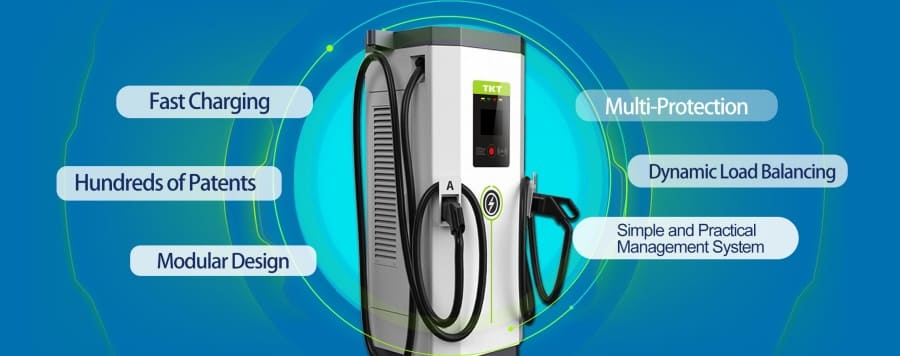

Tabela de especificação de carregador rápida TKT DC
Fique à vontade para deixar uma mensagem E-mail:md@tkt-hvac.com e deixe que nossos especialistas lhe forneçam conselhos especializados. Apoiamos a personalização OEM. (Role para a direita para ver o conteúdo completo no celular)

Conector do carregador DC
| Poder (kW) |
60kW / 90kW / 120kW / 150kW / 180kW / 200kW / 240kW / 300kW / 360kW |
| Tensão de entrada |
3-Fase 400V/440V/480V+15% CA |
| Frequência de trabalho |
45-65hertz |
| Interface de carregamento |
CCS1 / CCS2 / CHAdeMO / GBT *2 |
| Fator de potência |
≥0,99 |
| Eficiência |
≥94% |
| Tamanho da tela |
8” Tela sensível ao toque do LCD
(Brilho máximo acima de 800nit) |
| Idioma de suporte |
chinês, Inglês, russo, Outros idiomas suportam personalização |
| Pagamento |
APLICATIVO Móvel / RFID / PDV |
| Conexão de rede |
4G, Ethernet |
| Protocolos de comunicação |
OCPP1.6J ou OCPP2.0 |
| Comprimento do cabo de carregamento |
5m / 7.5m / 10m opcional |
| Temperatura de trabalho |
-35°C – +55°C |
| Classe IP |
IP55 A entrada de ar e a tomada têm um design de favo de mel e são à prova d'água de várias camadas. A malha é densa, O duto de ar está encurtado, e a área de dissipação de calor é grande. Impedir efetivamente o spray de água de qualquer ângulo.
(proteção contra sobretensão, proteção contra subtensão, proteção contra sobrecorrente, proteção contra curto-circuito, Proteção de segurança independente BMS, etc.) |
| Materiais de alta especificação |
G60 Folha galvanizada de mergulho a quente resistente à corrosão e folha de revestimento de alumínio-zinco espessado
Processo de pulverização anticorrosão de camada dupla, De acordo com a classe Qualicoat 1 padrão |
| Filtro de ar de três camadas |
Filtro de aço inoxidável, Algodão de filtro à prova de poeira de grau G4, Ciclo de manutenção longa, efetivamente à prova de poeira e à prova de umidade, e impedir o forte fluxo do vento. |
| Certificado |
ISO 9001, IATF16949, TUV, CE, IEC61851-1,IEC 62196-2 |
| Se precisar de outros parâmetros técnicos mais detalhados do produto, entre em contato conosco. Deixe um recado E-mail:md@tkt-hvac.com |
TKT DC Projetos de carregador rápido
1. Soluções de carregamento para grandes frotas
Os tipos comuns incluem transporte público, indústrias de transporte e logística. Realizamos uma estação de carregamento de ônibus elétricos nos EUA, estação de carregamento de ônibus no Canadá, estação de carregamento de carros de táxi na Austrália, estação de carregamento de caminhões elétricos no Reino Unido, etc.. Nosso carregador rápido DC aumentou a frequência de viagens de veículos em mais de 20%.
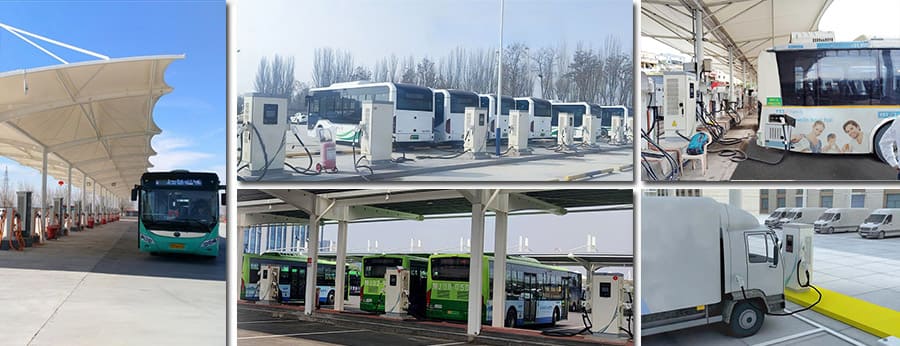
Clique para ver mais casos em alta definição
2. Soluções de carregamento para todos os locais comerciais
Com a popularidade dos veículos elétricos, cada vez mais instalações comerciais precisam de carregador rápido DC. Por exemplo, Estações de carregamento de edifícios de escritórios, estacionamento ev estações de carregamento, ev estações de carregamento para hotéis, estação de recarga de shopping, carregador de posto de gasolina, etc.. Exportamos para mais de 40 países e regiões, incluindo Tailândia, Índia, Malásia, México, Alemanha, e França.
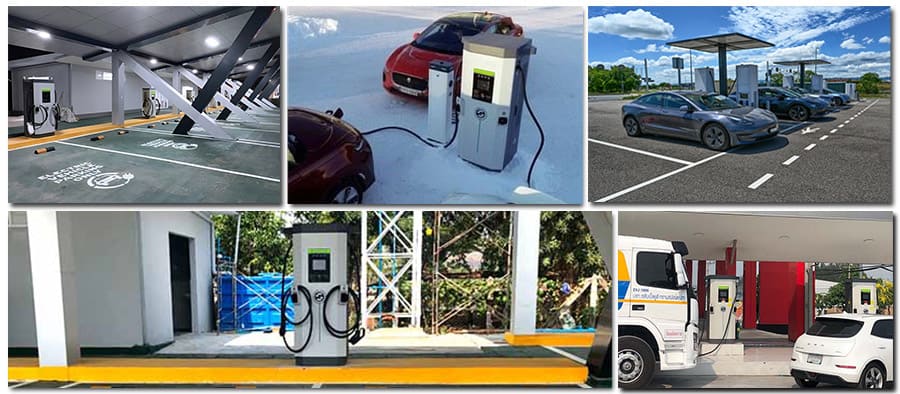
Clique para ver mais casos em alta definição
Conhecimento importante do carregador EV
O que é um carregador rápido de DC? Que nível de carregador é o DC rápido?
Carregador rápido CC, também conhecido como estação de carregamento rápido da DC, é um tipo de equipamento profissional de carregamento que reabastece rapidamente a energia elétrica para veículos elétricos através de DC. Este método de carregamento pode transferir diretamente a eletricidade de alta tensão DC para a bateria de energia do veículo através da porta de carregamento, Fornecendo serviço de carregamento para o veículo em pouco tempo com uma grande corrente CC.
Normalmente o carregador Fast DC é nivelado 3 Carregador VE, geralmente com faixas de energia de 30kW, 60kw, 90kw, 120kw, 150kw, 180kw, e 200kW. Em geral, nível 3 O carregador de EV é altamente eficiente, rápido, e uma maneira conveniente de carregar por veículos elétricos que precisam reabastecer a energia elétrica rapidamente.
Por que a CC está carregando mais rápido que o AC?
Estação de carregamento DC geralmente usa trifásico, potência CA de quatro fios de 380V ± 15%, que pode fornecer mais atual e poder, geralmente entre 30kW e 200kW. A estação de carregamento CA geralmente está abaixo de 7kW.
Em segundo lugar, A estação de carregamento DC adota o método de carregamento DC. Ele rapidamente converteu a energia CA em energia CC, que pode ser transmitido diretamente à bateria de energia. Dessa forma, elimina o lento processo de conversão de energia CA em energia CC pelo carregador EV a bordo.
Como funciona um carregador rápido de DC?
O princípio de trabalho de um carregador rápido de DC é que ele converte a energia de entrada CA em energia CC através de dispositivos eletrônicos internos (retificador, inversor, etc.). A energia elétrica é então rapidamente entregue à bateria de energia do veículo elétrico através de uma interface de carregamento de alta potência. Desta maneira, O efeito do carregamento rápido pode ser alcançado.
O carregador CA é diferente. Ele fornece apenas energia CA para veículos elétricos através de soquetes e cabos. O carregador de veículos elétricos converte a corrente alternada em corrente direta para carregar. Portanto, A velocidade de carregamento é muito lenta.
Especificamente, O fluxo de trabalho do carregador rápido do DC é o seguinte:
1. Quando um veículo elétrico é conectado a uma estação de carregamento rápida de DC, O carregador se comunicará primeiro com o veículo para identificar as necessidades de carregamento do veículo e o status da bateria.
2. O dispositivo eletrônico dentro da estação de carregamento rápida converterá a energia de entrada em energia CC e ajustará a tensão de saída e a corrente de acordo com as necessidades do veículo.
3. A corrente direta é entregue à bateria do veículo elétrico através de uma interface de carregamento de alta potência para obter carregamento rápido.
4. Quando a bateria é totalmente carregada ou atinge o nível de carregamento predeterminado, O carregador parará automaticamente de carregar e notificará o usuário de que o carregamento está completo.
Durante todo o processo de carregamento, A estação de carregamento CC monitorá o status de carregamento da bateria em tempo real para garantir a segurança da bateria e a eficiência de carregamento.
Quão rápido é o DC Charging Fast?
A velocidade da estação de carregamento rápida de DC depende de vários fatores, incluindo o tamanho da capacidade da bateria de energia configurada no veículo elétrico e a energia da pilha de carregamento. De um modo geral, O carregador rápido de DC pode carregar um veículo elétrico para 80% de sua capacidade em 30 minutos, E pode ser totalmente carregado em cerca de uma hora.
Vou usar o veículo elétrico Hyundai Kona 65 kWh como exemplo.
Cobrado em um nível 2 estação para carregar (7kw), o tempo para uma carga completa é aproximadamente 9.29 horas.
Cobrança no nível TKT 3 estação para carregar (180kw), o tempo de carga total é cerca de 22 minutos.
Quantos volts um carregador rápido dc entrega?
O carregador rápido de DC pode fornecer tensões que normalmente variam de 150 volts para 1,000 volts. O valor exato de tensão depende das características da bateria EV e da velocidade de carregamento necessária. Tensões mais altas aumentam as velocidades de carregamento, mas também requer equipamentos mais complexos e custos mais altos. Este carregador rápido compatível com a UE é feito de matérias-primas de altos padrões da UE. Portanto, Tudo será mais caro que os carregadores DC normais.
Todos os carros elétricos podem usar carregadores dc rápidos?
A grande maioria dos veículos elétricos pode usar CC Fast Chargers, Mas veículos elétricos mais antigos podem suportar apenas a cobrança de CA. A velocidade de carregamento exata de um veículo elétrico também depende de quanto DC carregou potência de carregamento O sistema de gerenciamento de bateria do veículo elétrico suporta.
Você pode instalar um carregador rápido em casa?
De um modo geral, não. Isso ocorre porque o DC Fast Charger é mais poderoso e exige uma equipe de instalação profissional, medidas comerciais de alta tensão e segurança relacionadas. Além disso, Seu custo é relativamente alto. Para usuários domésticos, Chargers lentos ou dispositivos de carregamento portáteis geralmente são recomendados para carregar.


